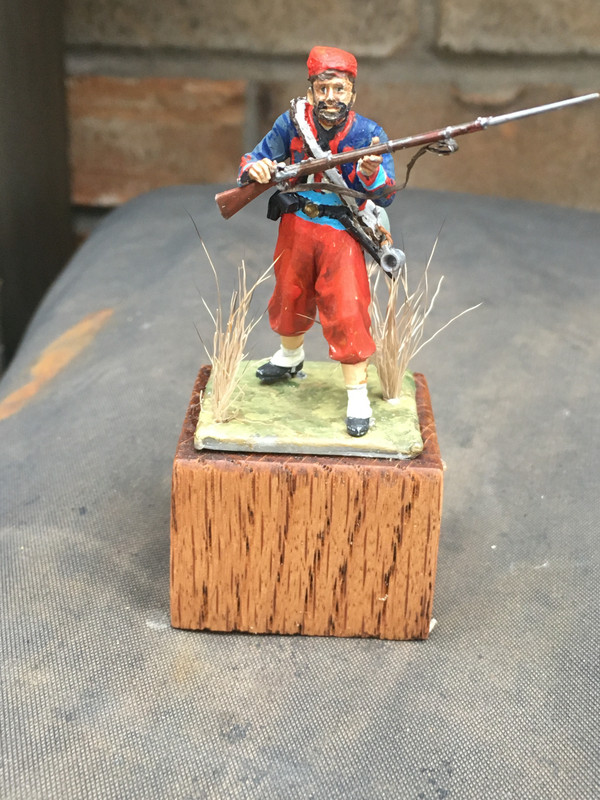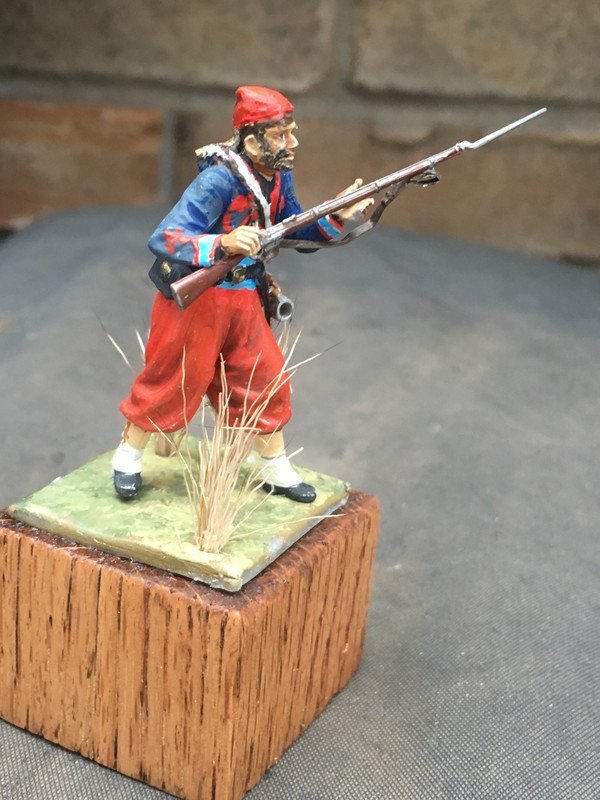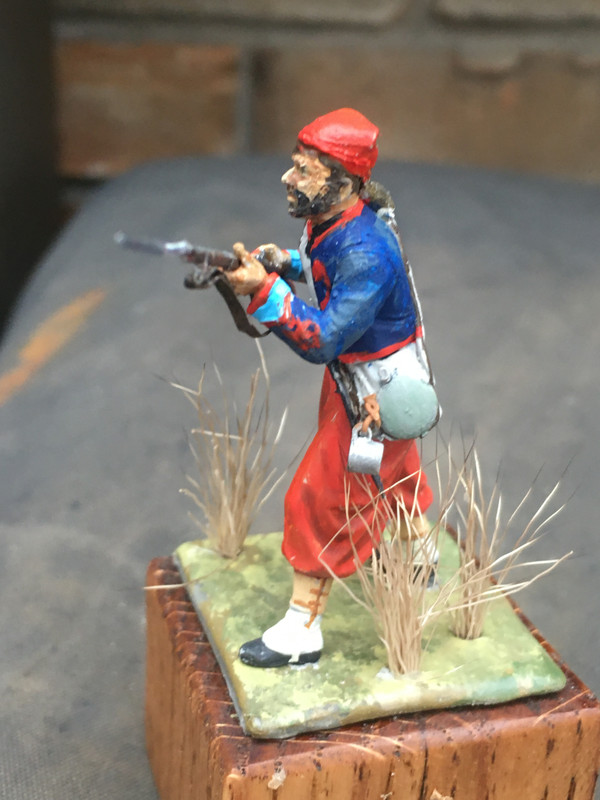First figure I've finished in a while, 114th Pennsylvania Volunteer Infantry, Collis' Zouaves de Afrique



I used the ICM 1914 French Zouave Infantry figures and replaced the weapon & kit with items from the ICM Union Infantry set. The haversack & canteen straps are ApoxieSculpt, the rifle sling is wine cork lead. The figure is painted in Vallejo Model Color, Model Air, and Reaper MSP colors.
Prior to the Civil War, Zouave units were civilian march and drill exhibition teams, often with bright uniforms. At the start of the Civil War, Charles Collis raised a company of volunteers from the Philadelphia area. He purchased the uniforms from the French government (see; using the ICM French Zouaves is appropriate). The company was attached to various regiments and saw early action in the Shenandoah Campaign and at Antietam.
Following this, the unit was augmented to regiment strength and given the 114th Pennsylvania Volunteer identifier. The 114th participated in the Battle of Fredericksburg where Colonel Collis earned the MOH for his actions in rallying the unit to resist a Confederate counterattack and prevent a Union artillery battery from being captured. At the Battle of Chancellorsville they suffered a great number of casualties and took more at Gettysburg where they defended the Peach Orchard salient.
Thereafter the unit was disestablished due to depleted numbers. However, the unit was used as provost guard at General Meade's headquarters. Meade, a Philadelphian himself, appreciated the colorful uniforms and military bearing of the Zouaves. He also liked their band, he called the best in the Army of the Potomac. Because of their headquarters guard duty and colorful uniforms. they were the most photographed Zouave unit of the war. They were given the honor of leading the V Corps Zouave units during the Grand Review in May 1865.
The 114th uniform consists of, from top to bottom, a red Moroccan style fez with a yellow-gold tassel worn crushed downward on the back of the head like a skull cap. Some men were issued fezzes that were too large so they compensated by turning up the brim giving the fez the appearance of a beanie. For dress parade and guard mount duty, the fez was augmented with a white turban which was wound around the head in Arabic style. Although the turban was not worn on the march or in battle it has often been erroneously portrayed as such in post-war art.
The collarless jacket was dark blue with sky blue cuffs and red trim. Arabesque designs on the jacket breasts were called tombeaux and gave the appearance of large false pockets trimmed in red.
A sky blue sash was worn wrapped tightly around the waist with Chasseur style madder red trousers, white leggings (gaiters), and leather jambieres (cuffs) rounding out the ensemble.